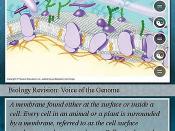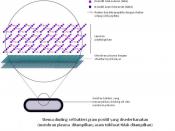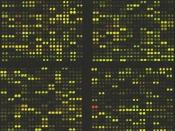Aim:
This experiment aims to determine what effect an increase in the surrounding temperature has on the plasma membrane of a typical plant cell structure.
Hypothesis:
An increase in temperature will damage and denature the plasma membrane and cause the cytoplasm and other substances contained within the membrane to leak out.
Introduction:
The purpose of a cell membrane is to control the transport of substances moving into and out of a cell. The membrane is an extremely thin layer (8 to 10 manometers (nm)) thick, which is partially permeable. It consists mostly of lipids and proteins. The lipids found in cell membranes belong to a class known as triglycerides, so called because they have one molecule of glycerol chemically linked to three molecules of fatty acids. The majority belong to one subgroup of triglycerides known as phospholipids.
Despite their many differences in appearance and function, all cells have a surrounding membrane (called the plasma membrane) enclosing a water-rich substance called the cytoplasm.
All cells host a variety of chemical reactions that enable them to grow, produce energy, and eliminate waste. Together these reactions are termed metabolism (from a Greek word meaning, "change"). All cells contain hereditary information, encoded in molecules of deoxyribonucleic acid (DNA), that directs the cell's activities and enables it to reproduce, passing on its characteristics to its offspring. These and other numerous similarities (including many identical or nearly identical molecules) demonstrate that there is an unbroken link between modern cells and the first primitive cells that appeared on earth.
In the cells of a beetroot plant, a substance called anthocyanin is contained within the plasma membrane. It is anthocyanin, which gives the beetroot its characteristic blue/purple colour. If a cell is damaged in a beetroot plant and the membrane is broken, the anthocyanin 'bleeds' from...


